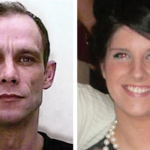Christopher Halliwell: The Secret Murders Part 3
5.3. The other Northern and Midlands Cases
by Chris Clark & Tim Hicks
Introduction
The North Yorks Enquirer (NYE) has been running a series of articles on convicted serial killer Christopher Halliwell, to assess the wider range of crimes he may have committed in North Yorkshire and beyond.
Serial killers prefer to operate in areas they are familiar with and know their way around. It follows from this piece of human psychology that to assess other crimes committed by Halliwell, it is necessary to identify where he lived and was familiar with, and then compare his modus operandi to unsolved crimes committed in those areas. To illustrate the complexity of this task, please see here a similar investigation by former Sussex Police Detective Constable Mark Williams-Thomas, into serial killer Peter Tobin.
Halliwell lived in several addresses in Swindon, the Liverpool area and Northampton. He may also have stayed with his father in the Huddersfield and York areas.
- Swindon is three-and-a-half hours drive to Grantham and about two hours twenty-minutes to Wolverhampton.
- Liverpool is a half-hour drive to Manchester and two-and-a-half hours to Sheffield.
- Northampton is one and a half hours drive to Grantham and about an hour and forty-five minutes to Wolverhampton.
- York is an hour and twenty minutes’ drive to Sheffield, an hour and forty minutes to Manchester, three hours to Wolverhampton and two hours to Grantham.
- Huddersfield is an hour’s drive to Manchester an hour and five minutes to Sheffield, two hours’ to Grantham and two and a half hours to Wolverhampton.
Halliwell had many jobs, including window cleaner, builder, ground worker, chauffeur, taxi-driver and bin man, his hobbies were narrow boating and fishing. These activities took him all over the country, giving him a good knowledge of many Northern and Midlands cities and the area around them. Consequently his geographic knowledge and area of operations was enormous; centered not just on Swindon, but along the canal network, at fishing spots and locations he worked at.
Adding to the complexity of this investigation, Halliwell was forensically aware. He changed cars regularly and destroyed forensic evidence whenever possible. He had also been a car thief and could steal cars to commit crime if he wished. The authors believe that he deliberately varied his modus operandi and abducted victims in one force area, then depositing the body in another. Thereby complicating the police investigation and making it more difficult for police intelligence analysts to link his crimes.
The authors have analysed Halliwell’s modus operandi, based on the circumstances of Halliwell’s two known murders [Miss Becky Godden-Edwards (Case 24) and Miss Sian O’Callaghan (Case 28)] and two deposition sites at Ramsbury Wilts. This has been compared to unsolved and undetected crimes in areas he was familiar with. This analysis is summarised below, in tabular format:
All of the cases considered in this article comply with Halliwell’s modus operandi, potential geographic area of operations and victim selection criteria.
Because of the size of this investigation, the NYE is covering it in a series of articles:
The NYE Christopher Halliwell Series:
- The breaking of Detective Superintendent Stephen Fulcher – by Tim Hicks
- Book review: “Catching a serial killer” by Stephen Fulcher – by Tim Hicks
- Christopher Halliwell and Peter Sutcliffe compared – by Chris Clark & Tim Hicks
- Christopher Halliwell how many victims? – by Chris Clark & Tim Hicks
- Christopher Halliwell: The Secret Murders – by Chris Clark & Tim Hicks. Parts 1 – 7.
- Scotland
- Is Halliwell the “East Lancs Ripper”?
- The other Northern and Midlands cases
- The River Tees and Middlesbrough murders
- York: Did Halliwell murder Claudia?
- The Swindon cases
- Outside Justice. Who murdered Linda Razzell?
The two Manchester City Centre cases.
Unknown: The Angel Meadows body (Case 1)
Julie Jones (Case 20)
The authors believe the two Manchester City Centre cases are linked to a series of murders and suspicious disappearances occurred in the quadrilateral shaped area defined by Liverpool, Rainsford, Leigh and Manchester, which may have been committed by Stephen Halliwell. They fall into three distinct groups:
- The murders of Linda Donaldson (Case 4), Maria Christina Requena (Case 6), Julie Finlay (Case 12) and Vera Anderson which have been suspected to be the work of a serial killer dubbed “The East Lancs Ripper” in the press. (Covered in the NYE article “Is Halliwell the East Lancs Ripper”).
- The suspicious disappearance of Helen Sage (Case 17), (Covered in the NYE article “Is Halliwell the East Lancs Ripper”).
- The murders of Angel Meadows (Case 1) and Julie Jones (Case 20) that took place in Manchester City Centre.
Greater Manchester Police (GMP) and Merseyside Police have never formally linked any of these cases. Murderers Duncan McLuckie and David Smith have been interviewed in connection with the murders of Linda Donaldson and Maria Christina Requena, but not charged.
Unknown: The Angel Meadows body (Case 1)
The victim of this murder has never been identified. Her body was discovered by builders in Manchester City Centre. She had been badly beaten, then partially stripped wrapped in carpet and dumped in the ‘Angel Meadows’ area of Manchester. Construction workers discovered the body in 2010. A shoe was taken possibly as a trophy.
Greater Manchester Police (GMP) have established the following about her:
- She was born sometime between 1950 and 1954 and was aged between 18 and 30 when she was murdered.
- Her death is believed to have occurred in the 70s or 80s.
- The victim was between 5ft 1in and 5ft 8in tall and was a size 12.
- She was probably European but could have come from the Middle East or Indian sub-continent.
- She had fillings and was missing the first upper right pre-molar, which would have been visible when she smiled broadly.
- The woman’s body was found alongside her green pinafore dress with large buttons, blue bra, jumper and tights. A jacket and a shoe were also recovered. The handbag was empty.
- There were three different colours of carpet at the scene – orange, blue and dark blue. The blue carpet appeared to have been cut to fit a Ford Cortina, with holes for a gear-stick. Some of the carpet was burned.
Scientists have recreated an image of her face and it is shown below:

The Angel Meadows body – Do you recognise her?
Daily Mail report with more information here.
She was thought at one point to be Helen Sage (Case 18) but this possibility was eliminated. BBC Report here.
Why the authors believe Halliwell should be considered as a suspect
- Halliwell may have visited Manchester on narrowboat holidays on the Bridgewater, Ashford and Rochedale Canals, or he may have worked in the city as a builder. It is entirely possible he had knowledge of Manchester.
- The body of Julie Jones (Case 20) was also found wrapped in carpet.
- The Angel Meadows murder was committed in the 1970s or the 1980s. Halliwell was born in 1964. He was imprisoned between 1985 and 1987 for car theft and burglary. He confessed to having strangled a woman to a cellmate. So Halliwell could have been active as a serial killer in the relevant timeframe up to 1985 and then from 1987 to 1989.
- Halliwell burned clothes and discarded seat covers and floor mats from his car after abducting Sian O’Callaghan, to destroy forensic evidence. This is consistent with destroying or dumping the carpet from the car used to transport the deceased.
- Halliwell tried to destroy evidence and this is consistent with the handbag being emptied.
- The deposition site at Angel Meadows is 0.6 of a mile from the Rochdale Canal, which connects the Leeds and Liverpool Canal via the Bridgwater Canal and 0.5 of a mile from the River Irwell. Both are fishing spots.
GMP have considered killers Ronald Castree and Peter Tobin and serial rapist James Lloyd as suspects, but they have not been charged.
Julie Jones (Case 20)
Julie Jones was a prostitute and mother of two, whose naked body was found under bushes at Shudehill, Manchester, six days after she was reported missing on the 3rd of July 1998. She had suffered crush injuries to her chest.
Like Michaela Hague (Case 20) and Sharon Harper (Case 11), Julie Jones body was found in a car park.
At the time, police did not link her disappearance with missing prostitute Helen Sage, (Case 16), who was last seen in Manchester’s red light district in August 1997, although it was recognised that there were similarities. (Covered in the NYE article “Is Halliwell the East Lancs Ripper”), because of its similarities to other offences in the Liverpool/Rainford/Leigh/ Manchester Quadrilateral.
Manchester Evening News report with more information, details of the reward of £50,000 and the police appeal here.
Why the authors believe Halliwell should be considered as a suspect:
- The Helen Sage and Julie Jones cases are both consistent with Halliwell’s Modus operandi (See Table 2).
- The Angel Meadows body (Case 1) was also found wrapped in carpet.
- Julie Jones worked in the Whalley Range (2.6 miles from the Rochdale Canal) and Minshull Street (100 yards from the Rochdale Canal) Red Light districts. The deposition site at Shudehill is 0.4 of a mile from the Rochdale Canal, which connects the Leeds and Liverpool Canal via the Bridgwater Canal.
- Helen Sage and Julie Jones were prostitutes, enticed into a car. The circumstances are very similar to the abduction and murder of Becky Godden-Edwards.
- Halliwell used prostitutes and may have used them in Manchester, while working or visiting there, or on a narrowboat holiday. This would give him knowledge of the abduction point(s).
- Helen Sage and Julie Jones perfectly fitted his victim preferences.
In response to a media enquiry from the NYE asking GMP to confirm if Halliwell had ever been considered as a suspect in any of these cases, the GMP Press Office stated:
“We never confirm or deny the names of suspects or where they are believed to have lived, in accordance with national policy.”
Anyone with information about either murder is asked to call the GMP Cold Case Review Unit on 0161 856 5978, or Crimestoppers on 0800 555 111.
The two Sheffield City Centre cases
Dawn Shields (Case 9)
Michaela Hague (Case 22)
Dawn Shields (Case 9)
Dawn Shields was a prostitute who disappeared on Friday the 13th of May 1994, while working Sheffield’s red-light area at Broomhall Road. She soon attracted one client who picked her up in a cream-coloured car. Dawn charged between £15 and £25 pounds and did not allow her clients to linger. By 12.45am, she was seen back on Broomhall Road and getting into a dark-coloured hatchback.
A friend who was looking after Dawn’s 11-month-old son, reported her missing at 7.30am on Saturday, May 14, 1994, and then notified Dawn’s mother.
On the 20th of May 1994 Dawn’s body was discovered by a National Trust warden who was test-driving a four-wheel drive vehicle over the grassy hill of Mam Tor, a peak near Castleton in the Peak District, 18 miles from Broomhall Road. It was naked and had been partially buried and concealed with rocks and debris. Dawn had suffered severe head injuries and was strangled. Police believe her body may have been buried for up to a week and subjected to a week of persistent rain, which effectively destroyed any forensic evidence.
Police searched the hillsides for the black mini skirt, see-through black blouse, black bra and ankle boots she was wearing when she died. Police believe she was killed elsewhere before her body was taken to the remote Mam Tor and hidden. They were unable to trace the owner of the hatchback.
The Senior Investigating Officer Detective Superintendent David Foss of Derbyshire Police said:
‘It was only luck that her body was discovered so soon. It was some 150 yards off the road and there was a barrier to stop cars because the road was subsiding. The area is popular with walkers but the week before had been very cold with torrential rain. We have failed to trace the owner of the hatchback. He would probably have been her last client because Dawn liked to get home by 1.30am to take over from her babysitter.’
The offender had abducted Dawn Shields in one police force area (South Yorkshire Police) and deposited her in the adjacent Derbyshire Constabulary area.
Michaela Hague (Case 22)
Michaela Hague was a prostitute who was stabbed multiple times in the early evening of 5 November 2001 in Sheffield. She was picked up at Bower Street and murdered at Spitalfields in Sheffield. She was able to give a description of her murderer to a Police Constable before she died.
At the time, police considered links with the murder of Dawn Shields (Case 9) above
Like Julie Jones (Case 20) and Sharon Harper (Case 11), Michaela Hague’s body was found in a car park.
BBC report with more information and police appeal here.
Why the authors believe Halliwell should be considered as a suspect in both murders:
- Halliwell may have visited Sheffield on narrowboat holidays on the Sheffield and Tinsley Canal, which eventually connects to the Ashford Canal at Manchester and then on to the Leeds and Liverpool Canal. (See Canal and River Trust map of the canal system here). He may have worked in the city as a builder or groundsman. It is entirely possible he knew Sheffield.
- Dawn Shields and Michaela Hague were prostitutes, enticed into a car. The circumstances are very similar to the abduction and murder of Becky Godden-Edwards who Christopher Halliwell murdered and buried in a shallow grave in a field at Eastleach in South Gloucestershire.
- Dawn Shields and Michaela Hague perfectly fitted his victim preferences.
- The abduction point for Dawn Shields at Broomhall Street is situated less than two miles from the Sheffield and Tinsley Canal moorings at Sheffield Basin.
- At the base of the deposition site for Dawn Shields at Mam Tor and nearby, are four show caves: Blue John Cavern, Speedwell Cavern, Peak Cavern and Treak Cliff Cavern where lead, Blue John, fluorspar and other minerals were once mined. The Blue John Cavern is one of the four show caves in Castleton, Derbyshire, England. The Speedwell Cavern is a Tourist attraction for boating enthusiasts like Christopher Halliwell. It consists of a horizontal lead miners’ adit (a level passageway driven horizontally into the hillside) leading to the cavern itself, a limestone cave. The adit is permanently flooded, resulting in Speedwell Cavern’s (locally unique) feature: after descending a long staircase, the visitor makes the journey into the cave by boat. Originally the guide propelled the boat by pushing against the walls with his hands, later the boat was legged through, now it is powered by an electric motor. It is two miles Mam Tor and on the direct route from Mam Tor deposition site to the abduction point in Sheffield.
- Nine miles from deposition site for Dawn Shields at Mam Tor is Ladybower Reservoir, which is a well-known fishing location, that Halliwell may have been fishing in. One of the routes from Sheffield to Mam Tor goes right past it.

- Michaela Hague was picked up at Bower Street (1.1 miles from the Sheffield and Tinsley Canal moorings at Sheffield Basin) and murdered at Spitalfields (0.5 miles from Sheffield Basin).
- Michaela Hague described her assailant to a Constable as being of medium build, about thirty eight years old, 5 foot 8 inches tall with glasses and wearing a wedding ring. He also had a gold sovereign ring on his left hand and a thumb ring with a dolphin on it on his right. Christopher Halliwell bears a very close likeness to both artists impressions of the prime suspect issued by the police, which can be seen here and here. Both likenesses are very similar to the artists impression of Caroline Glachan’s murderer, which can be seen here. There are photographs of Halliwell wearing sun glasses on holiday and various items of jewellery including necklaces and a ring. He was thirty seven years old in 2001.
- The prime suspect in Michaela Hague’s murder had been seen by other prostitutes in Sheffield in the months before Michaela’s abduction, but not since. Indicating a visitor or itinerant worker, consistent with Halliwell’s lifestyle.
In response to an enquiry from the NYE, a South Yorkshire Police spokesperson commented:
“Our Major Incident Review Team revisits all of the Force’s historic murder investigations bi-annually, to establish any new lines of enquiry and allocate dedicated resources to look in to these.
Our reviews are extensive and look at all the information we have obtained through our enquiries to date. Reviews can be quite a lengthy process however any relevant and significant lines of enquiry in this investigation will be pursued.
We would always encourage anyone with information, no matter how insignificant you think it might be, to please contact us on 101 or call Crimestoppers anonymously on 0800 555111.”
The West Yorkshire case: Lindsay Jo Rimer (Case 13) Hebden Bridge West Yorkshire
Lindsay Jo Rimer was thirteen years old when she disappeared on 7th November 1994. The last sighting of her was CCTV doing some shopping in the Spar shop at Crown Street, Hebden Bridge, West Yorkshire. She was reported missing the next day. Despite searches, no trace was found of her. There was local speculation that she had been unhappy at home and may have run away.
On the 12th of April 1995 Lindsay Jo Rimer’s body was found by two canal workers in the Rochdale Canal, about a mile upstream from Hebden Bridge. It was weighed down with a boulder. She had been strangled. BBC report here. There were no signs of a sexual assault.
The murder of Lindsay Jo Rimer is very similar to the murder of fourteen year old Caroline Glachan in August 1996. Both were found in a waterway a mile away from home, having disappeared late at night. Both victims were in their early teens.
Over the years, West Yorkshire Police has never given up on the investigation and an appeal for information can be seen here. Two men have been arrested in connection with the murder, but never charged. One was arrested in November 2016 and given police bail.BBC report here. Another was arrested in April 2017 and then released. BBC report here.
Unusually a retired detective from Cleveland Police has criticised the West Yorkshire Police investigation for not considering a suspect he had indicated to the investigation.
Why the authors believe Halliwell should be considered as a suspect:
- There are similarities with the murder of Caroline Glachan, which the authors believe was also perpetrated by Halliwell. (Please see the artists impression of the prime suspect in the Caroline Glachan murder here, which is a very strong likeness to Halliwell).
- When Wiltshire Police searched Halliwell’s home and computer, they found evidence that he enjoyed researching murder, hard-core pornography, including child abuse, violent sex and rape. He was known to have been worried that police were investigating him over allegations involving young girls, although there was no such investigation underway. Wiltshire Police were unable to identify what offences and underage victims Halliwell was referring to. Although both Caroline Glachan and Lindsay Jo Rimer were both in their early teens, it is clear from this that they both fitted Halliwell’s victim preferences for young, slim girls.
- Halliwell enjoyed narrow boating and fishing. He may have used the Rochdale Canal making him familiar with the deposition site. He may also have been fishing there late at night.
- If Halliwell had used the canal in a narrow boat, he may have gone to the local Spar shop for supplies, making him familiar with the abduction point.
- Having assessed the case, Chris is of the opinion that this is the only case we have covered where the abduction involved a narrow boat, not a car. If this is so, then it would explain the skill and care with which the body was concealed, evading detection for five months, despite a large search.
- After five months immersed in water, there was no forensic evidence available from the body, indicating a forensically aware criminal.
Anyone with information about the murder is asked to West Yorkshire Police on 01924 821 441, or 01924 334 604, or text 07786 200805, or call Crimestoppers on 0800 555 111.
The two Midlands cases
Janine Downes (Case 7)
Sharon Harper (Case 11)
Janine Downes (Case 7) Wolverhampton
The body of Wolverhampton prostitute Janine Downes was found on the 2nd of February 1991, dumped behind a hedge on a lay by on the A464 Shifnal to Wolverhampton Road. She had been strangled. Her body was naked from the waist down and some of her clothes were not recovered.
Philip John Smith and Alun Kyte were questioned about the murders, because they had convictions for murdering prostitutes.
Shropshire Star report with more information here. BBC Report here.
Why the authors believe Halliwell should be considered as a suspect:
- The victim fits Halliwell’s victim preferences and was a prostitute, enticed into a car.
- The circumstances are very similar to the abduction and murder of Becky Godden-Edwards and the deposition site is similar to the one Halliwell used for Sian O’Callaghan.
- Halliwell used prostitutes and may have used them in Wolverhampton, while working or visiting there, or on a fishing or narrowboat holiday. This would give him knowledge of the abduction point.
- The Staffordshire and Worcestershire Canal goes into Wolverhampton and the Shropshire Union Canal stops just North of Wolverhampton. The Wyrley and Essington Canal and Birmingham Canals Navigation Main Line Canal meet at Horseley Fields Junction to the East of Wolverhampton. Halliwell may have used both canals for Narrow boating holidays, making him familiar with Wolverhampton.
- The deposition site is 10.6 miles from the Shropshire Union Canal and the direct route to the deposition site from Wolverhampton passes over the Staffordshire and Worcester Canal at Tettenhall New Bridge.
- There is extensive fishing at Shifnal including along both canals. The Shropshire Union Canal is 10.5 miles away from Shifnal and 8.4 miles from the deposition site, the route to both locations from the Shropshire Union Canal is along the A464.
- Halliwell lived in Swindon and in Northamptonshire, which are only two hours by car from Wolverhampton.
In response to an enquiry from the NYE, a spokesperson for West Mercia Police confirmed:
“The case of Janine Downs is still under investigation and we would urge anyone with information to call West Mercia Police on 101. Alternatively, information can be provided anonymously to the independent charity Crimestoppers on 0800 555 111.
With regards to Christopher John Halliwell, our policy is to neither confirm nor deny the identity of anyone under investigation.”
Sharon Harper (Case 11) Grantham
Barmaid Sharon Harper went missing just after she left her work as a barmaid at the Market Cross pub in Westgate, Grantham at midnight on Saturday the 2nd of July 1994. Like Julie Jones (Case 20) and Michaela Hague (Case 22), Sharon Harper’s body was found in a car park. Her body was partially concealed with ornamental shrubbery; she had been beaten about the head and strangled. She had sex before she was killed.
Although five people were arrested, no-one was ever charged.
Grantham Journal report with more information here.
Why the authors believe Halliwell should be considered as a suspect:
- Halliwell may have visited Grantham on a narrow boat or fishing holiday, or for work. He could therefore be familiar with the area.
- The victims route home took her along Westgate and Harlaxton Road, which run parallel with the Grantham Canal, and then along Trent Road which crosses the Grantham Canal.
- Police investigated a witness report that a man described in his 30s had been seen arguing with Sharon near the Archways service station on Harlaxton Road Road, which is about half a mile from the point where Trent Road crosses the Grantham Canal. Halliwell was thirty in 1994.
- The deposition point in Earlesfield Lane is about 100 yards from the Grantham Canal. and about a mile from the River Witham which is a well-known fishing location.
NYE appeal for information on Christopher Halliwell.
If you think you can add to our analysis, please contact the NYE using our e mail address: news@nyenquirer.uk. All information will be treated in the strictest confidence.












